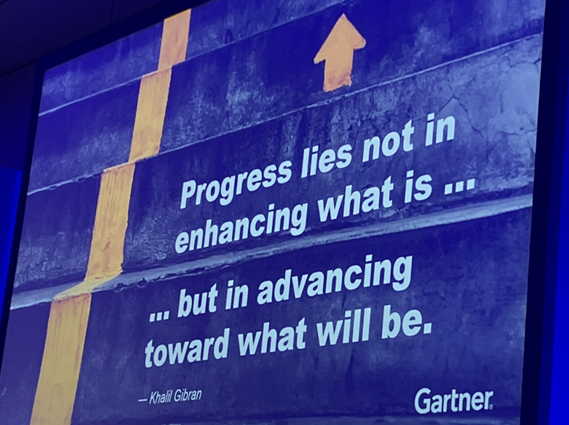4 Minutes of reading
What is quiet hiring? And how could it solve your recruiting nightmare?
Learning and Development is central to the quiet hiring approach to talent management according the experts at Gartner’s latest UK Digital Workplace Summit.
.jpg?width=1920&height=1282&name=christina-wocintechchat-com-VpcgTEKerEQ-unsplash%20(1).jpg)
There has been an explosion of interest in “quiet hiring” since Gartner highlighted it as one of the 9 Future of Work Trends for 2023. But what is it?
The research and consulting firm defines quiet hiring as “the practice of an organization acquiring new skills without hiring new full-time employees.” Done well, it can be a powerful answer to today’s recruiting challenges and a win-win for employees.
Why do we need quiet hiring?
Recruiters are facing a long-heralded demographic challenge. The war for talent, identified at the turn of the century, has been accelerated by the recent pandemic. Experienced, knowledgeable, and talented baby boomers are leaving the workforce and there are fewer Gen Zs to replace them.
Worse than that, younger candidates are choosier about where they work and more likely to move jobs. At Gartner’s Digital Workplace Summit, VP Analyst Gavin Tay noted that 60% of digital workers intend to leave their current employer within three years.
Retaining staff is a challenge, and hiring is harder still.
It takes nearly 50% longer to fill open positions than five years ago. The median days to fill open positions was 102 in 2022 compared to just 70 days in 2017.
Those gaps are impacting productivity.
How can L&D support quiet hiring?
How does an organization acquire new skills without new headcount?
In a lot of ways, quiet hiring is an expansion of what enlightened organizations have always done for their high-potential employees. It’s about identifying hard-working, highly competent individuals and giving them opportunities and training to grow.
Done well, it should be a win-win. Remember, employees (especially high-potential employees) want to learn and grow.
The key to quiet hiring, as Tay flagged with reference to Eli Lilly’s successful program, is to seek potential, not credentials.
Another of the Summit’s sessions gave a powerful example. Senior Director Analyst Tori Paulman described how, in recruiting for data analysts, just four skills requirements with a criteria of three years’ experience eliminated 98% of the candidate pool. That’s fine in a time of talent surplus but crippling when skills are in short supply.
Instead of credentials, look for potential. Find those individuals with aptitude and core competencies, then provide the projects, opportunities, and L&D content for them to grow.
Outcome thinking is essential. Focus on what those individuals can become.
This is where the L&D team is essential. Without support to develop skills, quiet hiring can quickly appear exploitative – burdening already stressed, overworked, and burnt-out staff with more responsibility.

Create an open, engaging employee experience
The L&D content you provide may need to evolve. Where previously, your business may simply have required and hired certain professional skills (Python or R programing, chartered financial analyst qualifications, CITB construction certifications), you may now need to make those knowledge pieces available in-house through your learning platform. Highly skilled individual contributors may need support in developing team management or collaboration skills.
Consider how workflow monitoring software can help identify skills gaps or development needs. One of the surprising findings from Gartner’s Digital Worker Experience study is that workers are mostly willing to accept monitoring in return for certain benefits, especially those that support their work and career development. “Making me aware of training classes and/or career development” was the top reason given for accepting monitoring.
Make training open to everyone. As you map out required skills by role, don’t make the mistake of restricting training to particular quiet hired candidates. Let employees self-select what interests them so that they can develop themselves … and you have another means of identifying previously unspotted potential.
Create a certification program and make those certificates shareable. People will post them on LinkedIn, for example, helping them to feel invested-in and more valuable, while their employer is seen by others as investing in its people.
That’s also important internally. Deutsche Post DHL’s Max Kersting described rolling out a single digital workplace to all 600,000 Deutsche Post DHL’s employees (of which 40% are office based and 60% frontline). Communicating a learning roadmap for all staff is vital, he explained. In the course of the project, the team discovered that employees in Mumbai were leaving the business because they didn’t think they could move to other roles within the business! By incorporating upskilling and quiet hiring into DHL’s L&D program this enabled a better retention rate globally, particularly in their high-risk Mumbai office.
How Rise Up supports your quiet hiring initiative
The Rise Up Learning Platform and LearningOps Methodology are designed to keep your teams up-to-skill, wherever, whenever and however they need to access learning.
We make it simple to design the personalized and self-guided learning pathways that are essential to support quiet hiring. We provide a powerful authoring tool and a rich library of third-party material, so you can quickly and easily provide tailored content to develop the skills your people need to fulfil their potential.
If you would like to learn more about how Rise Up can help you support your quiet hiring program, book a LearningOps workshop.


